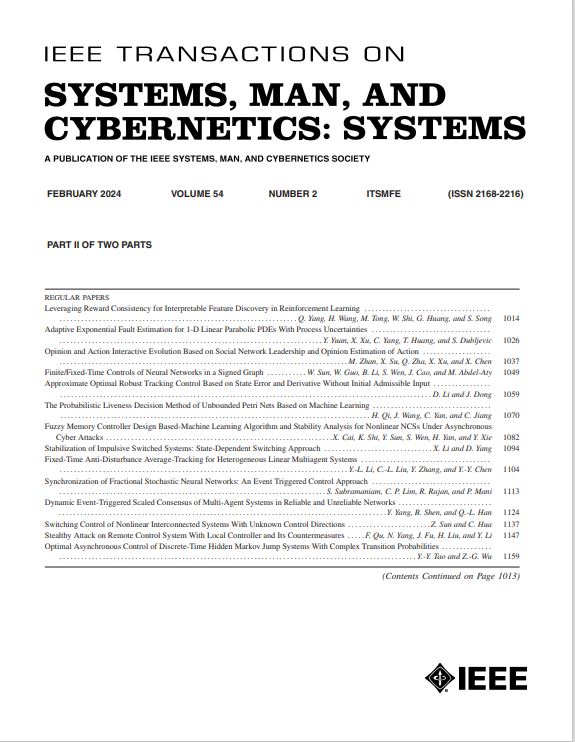An Integrated Control Framework for Safe and Ergonomic Human-Drone Interaction in Industrial Warehouses
IF 8.6
1区 计算机科学
Q1 AUTOMATION & CONTROL SYSTEMS
IEEE Transactions on Systems Man Cybernetics-Systems
Pub Date : 2025-02-28
DOI:10.1109/TSMC.2025.3540635
引用次数: 0
Abstract
This study introduces a novel control framework for human-drone interaction (HDI) in industrial warehouses, targeting pick-and-delivery operations. The goals are to enhance operator safety as well as well-being and, at the same time, to improve efficiency and reduce production costs. To these aims, the speed and separation monitoring (SSM) operation method is employed for the first time in HDI, drawing an analogy to the safety requirements outlined in collaborative robots’ ISO standards. The so-called protective separation distance is used to ensure the safety of operators engaged in collaborative tasks with drones. In addition, we employ the rapid upper limb assessment (RULA) method to evaluate the ergonomic posture of operators during interactions with drones. To validate the proposed approach in a realistic industrial setting, a quadrotor is deployed for pick-and-delivery tasks along a predefined trajectory from the picking bay to the palletizing area, where the interaction between the drone and a moving operator takes place. The drone navigates toward the interaction space while avoiding collisions with shelves and other drones in motion. The control strategy for the drone cruise navigation integrates simultaneously the time-variant artificial potential field (APF) technique for trajectory planning and the iterative linear quadratic regulator (LQR) controller for trajectory tracking. Differently, in the descent phase, the receding horizon LQR algorithm is employed to follow a trajectory planned in accordance with the SSM, which starts from the approach point at the border of the interaction space and ends in the volume with the operator’s minimum RULA. The presented control strategy facilitates drone management by adapting the drone’s position to changes in the operator’s position while satisfying HDI safety requirements. The results of the proposed HDI framework simulations for the case study demonstrate the effectiveness of the method in ensuring a safe and ergonomic HDI within industrial warehouses.求助全文
约1分钟内获得全文
求助全文
来源期刊

IEEE Transactions on Systems Man Cybernetics-Systems
AUTOMATION & CONTROL SYSTEMS-COMPUTER SCIENCE, CYBERNETICS
CiteScore
18.50
自引率
11.50%
发文量
812
审稿时长
6 months
期刊介绍:
The IEEE Transactions on Systems, Man, and Cybernetics: Systems encompasses the fields of systems engineering, covering issue formulation, analysis, and modeling throughout the systems engineering lifecycle phases. It addresses decision-making, issue interpretation, systems management, processes, and various methods such as optimization, modeling, and simulation in the development and deployment of large systems.
 求助内容:
求助内容: 应助结果提醒方式:
应助结果提醒方式:


